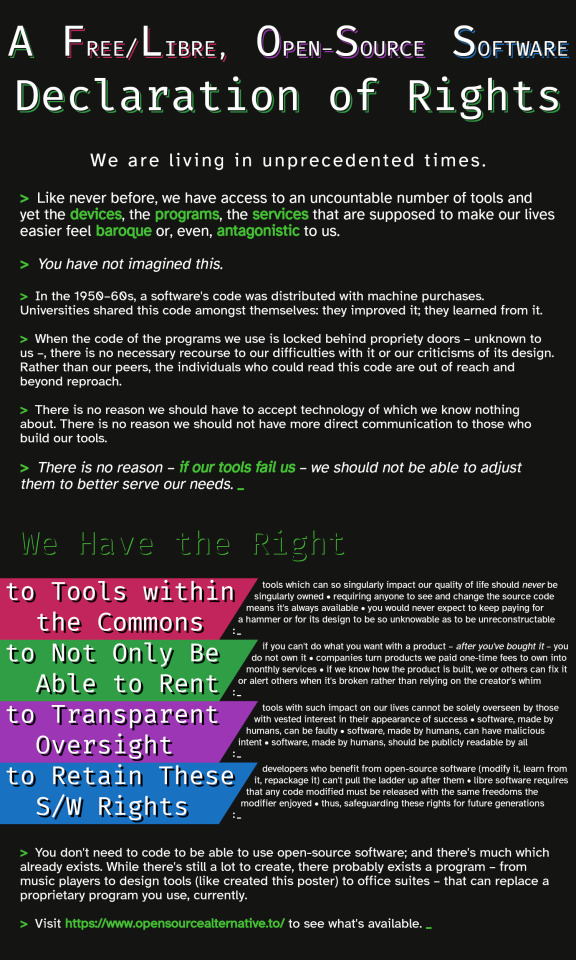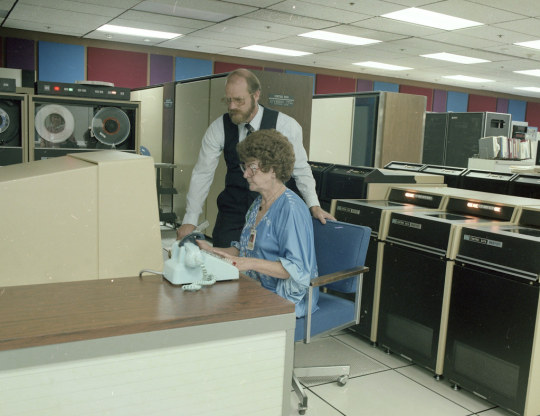#commons
Text
American education has all the downsides of standardization, none of the upsides

Catch me in Miami! I'll be at Books and Books in Coral Gables on Jan 22 at 8PM.

We moved to America in 2015, in time for my kid to start third grade. Now she's a year away from graduating high school (!) and I've had a front-row seat for the US K-12 system in a district rated as one of the best in the country. There were ups and downs, but high school has been a monster.
We're a decade and a half into the "common core" experiment in educational standardization. The majority of the country has now signed up to a standardized and rigid curriculum that treats overworked teachers as untrustworthy slackers who need to be disciplined by measuring their output through standard lessons and evaluations:
https://en.wikipedia.org/wiki/Common_Core
This system is rigid enough, but it gets even worse at the secondary level, especially when combined with the Advanced Placement (AP) courses, which adds another layer of inflexible benchmarks to the highest-stakes, most anxiety-provoking classes in the system:
https://en.wikipedia.org/wiki/Advanced_Placement
It is a system singularly lacking in grace. Ironically, this unforgiving system was sold as a way of correcting the injustice at the heart of the US public education system, which funds schools based on local taxation. That means that rich neighborhoods have better funded schools. Rather than equalizing public educational funding, the standardizers promised to ensure the quality of instruction at the worst-funded schools by measuring the educational outcomes with standard tools.
But the joke's on the middle-class families who backed standardized instruction over standardized funding. Their own kids need slack as much as anyone's, and a system that promises to put the nation's kids through the same benchmarks on the same timetable is bad for everyone:
https://pluralistic.net/2021/11/28/give-me-slack-2/
Undoing this is above my pay-grade. I've already got more causes to crusade on than I have time for. But there is a piece of tantalyzingly low-hanging fruit that is dangling right there, and even though I'm not gonna pick it, I can't get it out of my head, so I figured I'd write about it and hope I can lazyweb it into existence.
The thing is, there's a reason that standardization takes hold in so many domains. Agreeing on a common standard enables collaboration by many entities without any need for explicit agreements or coordination. The existence of the ANSI/SAE J563 standard automobile auxiliary power outlet (AKA "car cigarette lighter") didn't just allow many manufacturers to make replacement lighter plugs. The existence of a standardized receptacle delivering standardized voltage to standardized contacts let all kinds of gadgets be designed to fit in that socket.
Standards crystallize the space of all possible ways of solving a problem into a range of solutions. This inevitably has a downside, because the standardized range might not be optimal for all applications. Think of the EU's requirement for USB-C charger tips on all devices. There's a lot of reasons that manufacturers prefer different charger tips for different gadgets. Some of those reasons are bad (gouging you on replacement chargers), but some are good (unique form-factor, specific smart-charging needs). USB-C is a very flexible standard (indeed, it's so flexible that some people complain that it's not a standard at all!) but there are some applications where the optimal solution is outside its parameters.
And still, I think that the standardization on USB-C is a force for good. I have drawers full of gadgets that need proprietary charger tips, and other drawers full of chargers with proprietary tips, and damned if I can make half of them match up. We've continued our pandemic lockdown tradition of my wife cutting my hair in the back yard, and just tracking the three different charger tips for the three clippers she uses is an ongoing source of frustration. I'd happily trade slightly sub-optimal charging for just being able to plug any of those clippers into the same cable I charge my headphones, phone, tablet and laptop on.
The standardization of American education has produced all the downsides of standardization – a rigid, often suboptimal, one-size-fits-all system – without the benefits. With teachers across America teaching in lockstep, often from the same set texts (especially in the AP courses), there's a massive opportunity for a commons to go with the common core.
For example, the AP English and History classes my kid takes use standard texts that are often centuries old and hard to puzzle out. I watched my kid struggle with texts for learning about "persuasive rhetoric" like 17th century pamphlets that inspired anti-indigenous pogroms with fictional accounts of "Indian atrocities."
It's good for American schoolkids to learn about the use of these blood libels to excuse genocide, but these pamphlets are a slog. Even with glossaries in the textbooks, it's a slow, word-by-word matter to parse these out. I can't imagine anyone learning a single thing about how speech persuades people just by reading that text.
But there's nothing in the standardized curriculum that prevents teachers from adding more texts to the unit. We live in an unfortunate golden age for persuasive texts that inspire terrible deeds – for example, kids could also read core Pizzagate texts and connect the guy who shot up the pizza parlor to the racists who formed a 17th century lynchmob.
But teachers are incredibly time-constrained. For one thing, at least a third of the AP classroom time seems to be taken up with detailed instructions for writing stilted, stylized "essays" for the AP tests (these are terrible writing, but they're easy to grade in a standardized way).
That's where standardization could actually deliver some benefits. If just one teacher could produce some supplemental materials and accompanying curriculum, the existence of standards means that every other teacher could use it. What's more, any adaptations that teachers make to that unit to make them suited to their kids would also work for the other teachers in the USA. And because the instruction is so rigidly standardized, all of these materials could be keyed to metadata that precisely identified the units they belonged to.
The closest thing we have to this are "marketplaces" where teachers can sell each other their supplementary materials. As far as I can tell, the only people making real money from these marketplaces are the grifters who built them and convinced teachers to paywall the instructional materials that could otherwise form a commons.
Like I said, I've got a completely overfull plate, but if I found myself at loose ends, trying to find a project to devote the rest of my life to, I'd be pitching funders on building a national, open access portal to build an educational commons.
It may be a lot to expect teachers to master the intricacies of peer-based co-production tools like Git, but there's already a system like this that K-8 teachers across the country have mastered: Scratch. Scratch is a graphic programming environment for kids, and starting with 2019's Scratch 3.0, the primary way to access it is via an in-browser version that's hosted at scratch.mit.edu.
Scratch's online version is basically a kid- (and teacher-)friendly version of Github. Find a project you like, make a copy in your own workspace, and then mod it to suit your own needs. The system keeps track of the lineage of different projects and makes it easy for Scratch users to find, adapt, and share their own projects. The wild popularity of this system tells us that this model for a managed digital commons for an educational audience is eminently achievable.
So when students are being asked to study the rhythm of text by counting the numbers of words in the sentences of important speeches, they could supplement that very boring exercise by listening to and analyzing contemporary election speeches, or rap lyrics, or viral influencer videos. Different teachers could fork these units to swap in locally appropriate comparitors – and so could students!
Students could be given extra credit for identifying additional materials that slot into existing curricular projects – Tiktok videos, new chart-topping songs, passages from hot YA novels. These, too, could go into the commons.
This would enlist students in developing and thinking critically about their curriculum, whereas today, these activities are often off-limits to students. For example, my kid's math teachers don't hand back their quizzes after they're graded. The teachers only have one set of quizzes per unit, and letting the kids hold onto them would leak an answer-key for the next batch of test-takers.
I can't imagine learning math this way. "You got three questions wrong but I won't let you see them" is no way to help a student focus on the right areas to improve their understanding.
But there's no reason that math teachers in a commons built around the (unfortunately) rigid procession of concepts and testing couldn't generate procedural quizzes, specified with a simple programming language. These tests could even be automatically graded, and produce classroom stats on which concepts the whole class is struggling with. Each quiz would be different, but cover the same ground.
When I help my kid with her homework, we often find disorganized and scattered elements of this system – a teacher might post extensive notes on teaching a specific unit. A publisher might produce a classroom guide that connects a book to specific parts of the common core. But these are scattered across the web, and they aren't keyed to the specific, standard components of common core and AP.
This is a standardized system that is all costs, no benefits. It has no "architecture of participation" that lets teachers, students, parents, practitioners and even commercial publishers collaborate to produce a commons that all may share and improve upon.
In an ideal world, we'd get rid of standardization in education, pay teachers well, give them the additional time they needed to prepare exciting and relevant curriculum, and fund all our schools based on need, not parents' income.
But in the meanwhile, we could be making lemonade of out lemons. If we're going to have standardization, we should at least have the collaboration standards enable.

I'm Kickstarting the audiobook for The Bezzle, the sequel to Red Team Blues, narrated by @wilwheaton! You can pre-order the audiobook and ebook, DRM free, as well as the hardcover, signed or unsigned. There's also bundles with Red Team Blues in ebook, audio or paperback.

If you'd like an essay-formatted version of this post to read or share, here's a link to it on pluralistic.net, my surveillance-free, ad-free, tracker-free blog:
https://pluralistic.net/2024/01/16/flexibility-in-the-margins/#a-commons
499 notes
·
View notes
Text


Camilla’s siblings mock her tiny height
Ennis siblings in age order: Abigail (ginger sister), Camilla (Alvis’ mum), William (ginger brother), Nicholas (brown haired brother) and Marta (brown haired sister)
Camilla’s sibling designs belong to @buttercup-draws44
#my art#cards#spades#camilla Ennis#abigail Ennis#William Ennis#Nicholas Ennis#marta Ennis#commons#Alvis had such a big fam on his mums side but never really knew them#camilla too scared to leave the palace let alone the capital#and the Ennis live in the seven region so they never got to see each other much#couple tried to visit but it expensive to travel and they’re a family of millers
52 notes
·
View notes
Link
Capitalism relies on maintaining an artificial scarcity of essential goods and services (like housing, healthcare, transport, etc), through processes of enclosure and commodification. We know that enclosure enables monopolists to raise prices and maximize their profits (consider the rental market, the US healthcare system, or the British rail system). But it also has another effect. When essential goods are privatized and expensive, people need more income than they would otherwise require to access them. To get it they are compelled to increase their labour in capitalist markets, working to produce new things that may not be needed (with increased energy use, resource use, and ecological pressure) simply to access things that clearly are needed, and which are quite often already there.
Take housing, for example. If your rent goes up, you suddenly have to work more just to keep the same roof over your head. At an economy-wide level, this dynamic means we need more aggregate production — more growth — in order to meet basic needs. From the perspective of capital, this ensures a steady flow of labour for private firms, and maintains downward pressure on wages to facilitate capital accumulation. For the rest of us it means needless exploitation, insecurity, and ecological damage. Artificial scarcity also creates growth dependencies: because survival is mediated by prices and wages, when productivity improvements and recessions lead to unemployment people suffer loss of access to essential goods — even when the output of those goods is not affected — and growth is needed to create new jobs and resolve the social crisis.
There is a way out of this trap: by decommodifying essential goods and services, we can eliminate artificial scarcity and ensure public abundance, de-link human well-being from growth, and reduce growthist pressures.
238 notes
·
View notes
Text
To restore Earth’s forests and mitigate climate change, states should devolve management rights to the communities in these land parcels and grant them secure tenure.
But how should these commons be governed? Ostrom’s many years of research are, again, a useful guide. She advocated for clear boundaries defining the community’s rights, rules for forest use, the rights of all members of a community to participate in making those rules (including women and marginal communities), collective decision-making on managing resources, effective monitoring, graduated sanctions for rule violations, conflict resolution mechanisms, and a nested governance structure when multiple communities have rights over the same resources.
Dhanapal Govindarajulu in The Conversation. Billions have been raised to restore forests, with little success. Here’s the missing ingredient
6 notes
·
View notes
Text
We Are Stronger, When Sharing, than Given Scraps by the Few

Corporations will insist that Free Software is a nice idea but their software “just works” – until the monopoly is completed.
10 notes
·
View notes
Text
By Czepeku

9 notes
·
View notes
Text
Commons scholar Peter Linebaugh describes the street in 18th-century England as part of the urban commons: a vital place for sport, theatre, trade and encounter, a space joining producer and consumer, where social and economic life were inextricable. The wave of enclosures in the late 18th century (a large-scale process of privatisation, closing off and fencing in) affected urban infrastructure as well as common lands. The street moved from a place for lingering and negotiations to its primary role as a thoroughfare. Alongside this transformation, Linebaugh notes in his book Stop, Thief! (the meaning of "traffic" changed from commodity exchange to vehicular motion on the roadways linking forever speed, avarice, and congestion?
The term 'traffic still refers to trade, but is now synonymous with illicit and exploitative practices. This slippage in meaning makes me wonder if the removal of trade from the streets, the common and vernacular, might be considered as another fundamental form of enclosure (at least in England, where I write): the separation of the worker from the means of distribution. Something relinquished that could yet be recovered, by changing how we think and act with infrastructure.
Kate Rich, 'Feral Trade, or How I Became a Grocer' in Dark Mountain issue 23, Spring 2023, p.59.
#kate rich#dark mountain#feral trade#street#everyday#commons#uk#streetwriters#busking#trade#enclosures#colonialism#2023
2 notes
·
View notes
Text
Stimpunks.org: A Knowledge Commons at the Edges
Stimpunks.org: A Knowledge Commons at the Edges
Remix like a punk
Create open source communities instead of walled gardens of intellectual property rights – to create a global knowledge commons and to maximise collective intelligence.Replacing Control With Ecologies of Care | Autistic Collaboration
Our Glossary, Field Guide, Library, Pillars, Gallery, and Courses steadily expand in depth and breadth. We’re building a knowledge commons and a…

View On WordPress
#bricolage#commons#constructionism#default to open#free cultural work#knowledge#open source#remixing
8 notes
·
View notes
Text

#IFTTT#Flickr#mallorca#commons#creativecommons#canon#canoneos#eos6d#helios#helios44m#helios44m58#rubio#gato#gatto#chat#cat#orangecat#gingercat#katz#mao#neko#mascota#pet#animal#dogs#cats
12 notes
·
View notes
Text
youtube
Primer episodio de mi Retro VLOG, para contarles que anduve haciendo, dejarles alguna recomendacion, y contarles que cosas se vienen a futuro entre mis proyectos que van a ver por aca.
En este episodio charlamos sobre Wikipedia, Wikimedia, copyright, Dartmouth BASIC, Atari 2600, Compumate y otros proyectos futuros.
Links de la Recomendacion:
Birth of BASIC: https://www.youtube.com/watch?v=WYPNjSoDrqw&ab_channel=Dartmouth
¿Dónde ver más contenido?
Twitter: https://twitter.com/ar_jorge1987
Newsletter: https://arjorge1987.substack.com/
Twitch: https://www.twitch.tv/arjorge1987
#VLOG#podcast#retro#video#videocast#retrocomputacion#videojuegos#wikipedia#wikimedia#commons#basic#darthmouth#programacion#spectravideo#compumate#atari#atari 2600#Youtube
2 notes
·
View notes
Text
Happy birthday to the Flickr Foundation!
Happy birthday to the Flickr Foundation - the biggest, best archive of no-restriction, public domain photos on the web, with over 100 participating institutions, including the Library of Congress!

The Flickr Foundation is structured as a 501(c)3 nonprofit, with an ambitious, 100-year plan to catalog, safeguard, and make available a vast trove of images that belong to all of us.
They are taking the "access" part seriously - making sure that the competing priorities of "getting and storing everything" and "letting everyone use everything" don't come down on the side of a vast, musty archive that no one sees - and no one defends when it's on the chopping block.

You can already search Flickr for millions of CC images, but these come with strings attached, requirements for attribution and follow-on licensing. The Commons, on the other hand, is entirely free to use. Search for yourself!

449 notes
·
View notes
Text
You've probably heard of the "Tragedy of the Commons," which claims to be a "realist" account of what happens when people try to share something – a park, a beach, a forest – without anyone owning it. According to the "tragedy," these commons are inevitably ruined by "rational" actors who know that if they don't overgraze, pollute or despoil, someone else will, so they might as well get there first.
The Tragedy of the Commons feels right, and we've all experienced some version of it – the messy kitchen at your office or student house-share, the litter in the park, etc. But the paper that brought us the idea of the Tragedy of the Commons, published in 1968 by Garrett Hardin in Science, was a hoax.
Hardin didn't just claim that some commons turned tragic – he claimed that the tragedy was inevitable, and, moreover, that every commons had experienced a tragedy. But Hardin made it all up. It wasn't true. What's more, Hardin – an ardent white nationalist – used his "realist's" account of the commons to justify colonization and genocide.
87 notes
·
View notes
Note
Why did Jana not gain Kellan’s last name?
A little complicated
Nobody actually recognised that Jana was Kellan’s wife even though they were married. Everyone (mostly the nobles) butted heads about it so Jana just used her old surname so she wouldn’t rock the boat anymore cause she was clearly the only adult in that whole situation. Kellan still thought of her as Jana Kroda-cor but nobody else really did
18 notes
·
View notes
Text
Polanyi notes that this destruction of the material fabric of a peasantry’s way of life, to force them into capitalist labor, was first done to “white populations by white men” before being exported globally to the benighted barbarians of distant dusky-maiden-laden lootable lands. The idea that letting the poor starve is just human nature took vast industrial-scale evil-evangelizing efforts to make the “creed of liberalism” feel like it was human nature itself. As Paine noted in his other smash-hit, The Rights of Man: “a great portion of mankind, in what are called civilized countries, are in a state of poverty and wretchedness, far below the condition of an Indian.” Classical liberal market-oriented “civilization” historically went hand-in-hand with making mass starvation amid plenty seem morally acceptable or like an unavoidable necessity. 1830s Britain saw “an almost miraculous increase in production accompanied by a near starvation of the masses.” Polayni calls Britain’s 1834 Poor Law Reform a “scientific cruelty” under which the prior “right to live was abolished” for the sake of the labor market. The threat of starvation was a “psychological torture coolly advocated and smoothly put into practice… as a means of oiling the wheels of the labor mills.”
Jag Bhalla, Free Market Genocides: The Real History of Trade
122 notes
·
View notes








